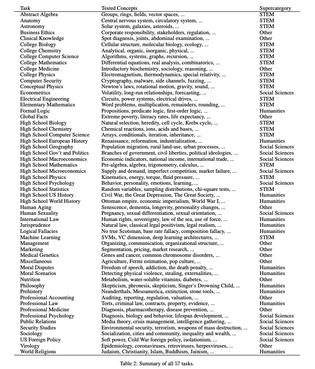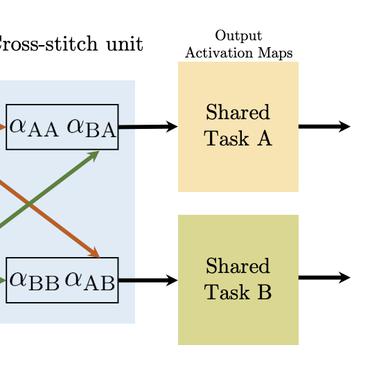Language Models are Unsupervised Multitask Learners
Natural language processing tasks, such as question answering, machine translation, reading comprehension, and summarization, are typically approached with supervised learning on taskspecific datasets. We demonstrate that language models begin to learn these tasks without any explicit supervision when trained on a new dataset of millions of webpages called WebText. When conditioned on a document plus questions, the answers generated by the language model reach 55 F1 on the CoQA dataset - matching or exceeding the performance of 3 out of 4 baseline systems without using the 127,000+ training examples. The capacity of the language model is essential to the success of zero-shot task transfer and increasing it improves performance in a log-linear fashion across tasks. Our largest model, GPT-2, is a 1.5B parameter Transformer that achieves state of the art results on 7 out of 8 tested language modeling datasets in a zero-shot setting but still underfits WebText. Samples from the model reflect these improvements and contain coherent paragraphs of text. These findings suggest a promising path towards building language processing systems which learn to perform tasks from their naturally occurring demonstrations.
PDFCode
Tasks
Datasets
Introduced in the Paper:
 WebText
WebText
Used in the Paper:
 GLUE
GLUE
 Natural Questions
Natural Questions
 Penn Treebank
Penn Treebank
 WikiText-2
WikiText-2
 WikiText-103
WikiText-103
 CNN/Daily Mail
CNN/Daily Mail
 WSC
WSC
 CoQA
CoQA
 LAMBADA
Billion Word Benchmark
LAMBADA
Billion Word Benchmark
 CBT
One Billion Word Benchmark
Children's Book Test
CBT
One Billion Word Benchmark
Children's Book Test
 decaNLP
BookTest
Text8
decaNLP
BookTest
Text8
 SIMMC2.0
SIMMC2.0
Results from the Paper
 Ranked #1 on
Language Modelling
on enwik8
(using extra training data)
Ranked #1 on
Language Modelling
on enwik8
(using extra training data)
| Task | Dataset | Model | Metric Name | Metric Value | Global Rank | Uses Extra Training Data |
Benchmark |
|---|---|---|---|---|---|---|---|
| Document Summarization | CNN / Daily Mail | GPT-2 | ROUGE-1 | 29.34 | # 26 | ||
| ROUGE-2 | 8.27 | # 26 | |||||
| ROUGE-L | 26.58 | # 26 | |||||
| Language Modelling | enwik8 | GPT-2 (48 layers, h=1600) | Bit per Character (BPC) | 0.93 | # 1 | ||
| Number of params | 1542M | # 1 | |||||
| Language Modelling | LAMBADA | GPT-2 1.5B (Zero Shot) | Accuracy | 63.24 | # 29 | ||
| Perplexity | 8.63 | # 10 | |||||
| Language Modelling | One Billion Word | GPT-2 | PPL | 42.16 | # 21 | ||
| Number of params | 1.54B | # 1 | |||||
| Language Modelling | Penn Treebank (Word Level) | GPT-2 | Test perplexity | 35.76 | # 3 | ||
| Params | 1542M | # 2 | |||||
| Dialogue State Tracking | SIMMC2.0 | GPT-2 | Slot F1 | 81.7 | # 4 | ||
| Act F1 | 94.5 | # 4 | |||||
| Response Generation | SIMMC2.0 | GPT-2 | BLEU | 19.2 | # 5 | ||
| Language Modelling | Text8 | GPT-2 | Bit per Character (BPC) | 0.98 | # 1 | ||
| Number of params | 1542M | # 1 | |||||
| Language Modelling | WikiText-103 | GPT-2 Large | Test perplexity | 22.05 | # 46 | ||
| Number of params | 774M | # 8 | |||||
| Language Modelling | WikiText-103 | GPT-2 Medium | Test perplexity | 26.37 | # 63 | ||
| Number of params | 355M | # 10 | |||||
| Language Modelling | WikiText-103 | GPT-2 Full | Test perplexity | 17.48 | # 25 | ||
| Number of params | 1542M | # 6 | |||||
| Language Modelling | WikiText-103 | GPT-2 Small | Test perplexity | 37.50 | # 79 | ||
| Number of params | 124M | # 39 | |||||
| Language Modelling | WikiText-2 | GPT-2 (small) | Test perplexity | 29.41 | # 9 | ||
| Number of params | 117M | # 7 | |||||
| Language Modelling | WikiText-2 | GPT-2 (medium) | Test perplexity | 22.76 | # 8 | ||
| Number of params | 345M | # 5 | |||||
| Language Modelling | WikiText-2 | GPT-2 (large) | Test perplexity | 19.93 | # 7 | ||
| Number of params | 762M | # 3 | |||||
| Language Modelling | WikiText-2 | GPT-2 | Test perplexity | 18.34 | # 6 | ||
| Number of params | 1542M | # 1 | |||||
| Coreference Resolution | Winograd Schema Challenge | GPT-2-XL 1.5B | Accuracy | 70.7 | # 33 |























